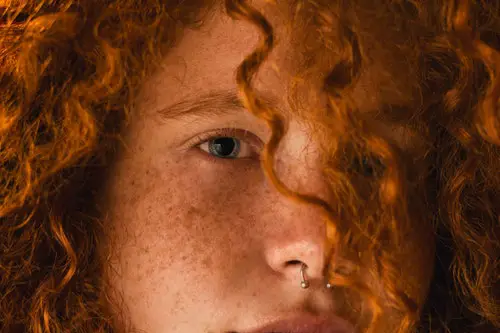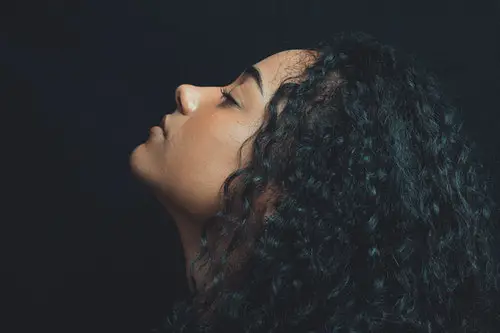Hair is a fine threadlike outgrowth from the skin of humans and most animals. It is one of the defining characteristics of mammals. it is made up of multi-layered flat cells. Most people are curious to know the types of human hair, its growth, and most importantly how to care for it. For this reason, I have come up with this article to discuss extensively the types of human hair.
It is worthy of note that hair is also an important bio-material composed of a protein known as Alpha Keratin. It grows on every part of the human body except the soles of the feet, lips, palms of the hands, the external part of the genital areas, navel, and the eyelids apart from the eyelashes.

Types Of Human Hair
The types of human hairs will be characterized based on its location on the body, its texture, and its style.
Hair Based on Location
Basically, all hairs are made up of the protein known as keratin and function majorly as a protective layer on our skin but its location on our body is different due to factors like gender, age, genetics, and hormones. These hairs based on their location have different characteristics. That is why the hairs on our heads are really different from other hairs seen on our hands, legs, and genital areas.
Hairs Based on location can be sub-categorized into;
- Scalp hair: These hairs are located on top of the head. There is more hair found on the scalp than any other part of the body because it has more numbers of sebaceous glands residents there.
- Facial hair: These hairs are located on the face. Examples are beards and mustache.
- Fine hair: These are hairs in the nose, ears, eyebrows, and eyelashes.
- Pubic hair: These are hairs found in the genital region.
- Body hair: These are hairs found on the hands, legs, chest, arms, and armpits.
Hair Based On Texture
Hair texture can be said to be the circumference of your hair or to put it better, the way the hair strands are shaped. There are three different hair textures;
- Fine hair: This hair texture is very fragile. The individual hair is very thin and has just two hair layers; the cortex and the cuticle. People with this hair type find it difficult to keep it in a particular style. Also, many hair products should not be applied to this hair because it can weigh the texture and make it break easily. Fine hair is majorly very oily.
- Medium hair: This hair type is thicker than fine hairs but has the same number of hair layers. Though, a third layer; the medulla is found on the hair of most persons. It is easier to style this hair type since it is thick and resistant to breakage.
- Thick hair: This hair type has all three hair layers; the cortex, the cuticle, and the medulla. People with this hair type are termed to have fuller hair. This hair type can hold any kind of styling and it is resistant to heat, any type of hair styling products, and breakage. One advantage of fine and medium hair has over it is the ability to dry over a short period of time. Since it is very thick, it means it will hold moisture longer and take longer to dry.
Hair Based On Style
This is basically the curl pattern of the hair which depends on the hair follicle. Naturally, the hair follicle determines the category your hair falls into, whether straight, wavy, curly, or coily. It is also possible to alter the curl pattern of your hair using chemicals and heat.
It can also be altered by medications you take or hormones, but it is basically the DNA that is responsible for the curl pattern. Oprah Winfrey’s stylist, Andre Walker developed a system that categorizes the hairstyle type into one of four categories of the curl patterns.
Based on how tight or lose the curls are, the four categories are further divided into subcategories.
- Straight hair: This style has no natural curl. Each individual hair strand is either thin or thick, but there is no coil or curl from the hair root to the tip. The majority of straight hairs are very oily due to its fine texture, it is recommended that the label of any hair product be checked if it has oil in it before buying it, to avoid adding extra oil to your hair.
- Wavy hair: This hairstyle seems to be scattered because of its tousled texture. It is a bit straight from the hair root to about the eye level and from the eye level to the end, it is loose and undefined.
- Curly hair: This hairstyle is the largest in diameter with a mix of the wavy style. It is advisable not to brush this hairstyle or risk having your hair looking like the mane of a lion.
- Coily hair: Of all hairstyles, oily hair is the driest and coarsest. It is very hard to get moisture to the scalp of the head because of the turns and twists this style has which also makes it hard to determine the actual length of the hair.
Hair Growth
Hair has a growth cycle or phases in its growth as most persons will say. They are Anagen, Catagen, and Telogen and each phase has its characteristics that determine the length of the hair. The first phase called the Anagen Stage is the period of active hair growth, where the hair keeps growing. About ninety percent of human hairs are at this stage.
The second phase called the Catagen Stage is the phase where the hair gradually turns grey as a sign of advance in an age in many cases. At this phase, the hair is still growing even though it has lost its melanin pigment.
The third phase called the Telogen phase is the phase where the hair follicle becomes dormant and stops growing hair. About ten percent of human hairs are at this stage.
The different colors observed in the human hair is as a result of the melanin pigments; pheomelanin and eumelanin. The eumelanin is dominant in brown, blond, and black while the pheomelanin is dominant in red hairs. Grey hair does not have a pigment of its own, they are as a result of the disappearance or lowering of either pheomelanin or eumelanin pigments.



